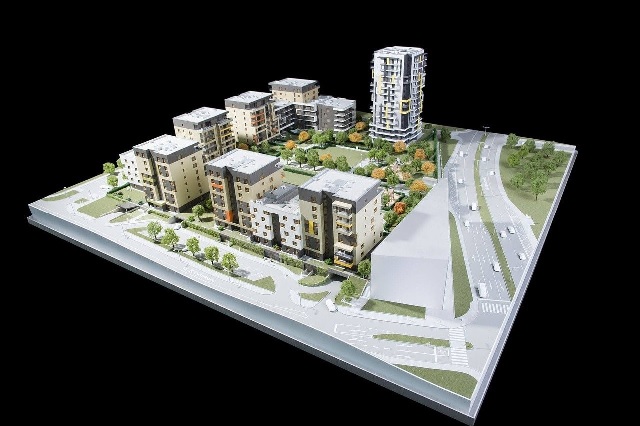Human factors are the interactions between humans and their environment. These factors are generally considered when new ideas, fresh approaches, and decisions are being made in every capacity. However, this does not mean that it is a key deciding factor.

Urban Planning and Design
When committees and decision-makers are drafting the emerging plans and designs of new or expanded urban areas, there are human factors to be considered. What the community members need within the area is important. Housing structures, medical facilities, and business opportunities, all fall into the human factor category. Yet, other factors should be considered as well, which are often overlooked.
This may be the placement of a park next to a busy highway, increasing the risk of accidents. Or, businesses that do not put engineering in place to increase employee safety. The examples could go on and on, and the solution for each of them is quite simple: better planning. By being proactive and giving human factors a seat at the table, better decisions can be made to enhance the lives of urban community members.

Urban Areas Are Growing
According to the book Human Factors in Land Use Planning and Urban Design, by 2050, it is projected that 65% of the population will reside in urban areas. According to the World Health Organization, that means 6.5 billion people living in urban areas worldwide. This means an increased demand for city expansions leading to new housing developments, recreational areas, and businesses. During the development and planning phase, decision-makers in all capacities should be considering area human factors when creating their strategic plans.
Strategic Planning Pitfalls
Urban planning and design require strategic planning. Yet, according to Gartner, only 8% of strategic leaders reported a success rate of 90% or more on long-term strategic goals. The pitfall of successful execution comes from a lack of follow-through. Plans are made with all of the best intentions but then left to be forgotten.
Ideally, a strategic plan should outline initiatives to be achieved, and action items to achieve them. However, this leaves for a certain level of ambiguity. What initiatives are vital? What can be compromised, and what should take priority?
Giving Human Factors a Seat At The Table
Identifying the human factors that contribute to the growing urban community is pivotal. By leaving these factors as secondary notions the community, its employees, and citizens will experience hardships. With a lack of empathy, the community is not properly utilized for those living and working in it. Additionally, increased safety risks may become exposed, leading to long-term issues and a poor reputation for the new development. It is far past time human factors became a proactive, deciding factor in the planning process.

How to Involve Human Factors
From a strategic planning perspective, design and planning come soon after a need has been established. This may be adding a commercial development near a highly populated residential area, or a recreational trail connecting two communities. It is then, that planning and design needs to be considered, and at this point human factors shall be included too.
For starters, community involvement should take place. If a commercial business area is being added to a residential community, how does that community feel about it? Do they want it in a certain location? What types of businesses would they like to see fill the space? Similar to a recreational area, such as a bike trail or walking path that will connect two communities. How do both communities feel about it? Ideally, where would each community entry point be? How is this being funded?
Practically, not everyone can be pleased. However, the community should feel invested in these decisions. They should also feel heard. By including them in the early stages of the strategic plan, community members can bring human factor concerns that a standard business developer may not consider. These suggestions can then be included in the mockup phase.
It is during this phase that feedback will continue at both an internal level with the team as well as within the community. Given that feedback, concepts may be refined to finally reach the design and planning phase.
By now, the community has been involved throughout the process. Allowing them to bring their questions, concerns, and suggestions to the table for decision-makers to hear. They are invested and know the community like the back of their hand. Changes to their urban area will directly impact them, and their suggestions should not be taken lightly. As a matter of fact, many of them will be key factors in the final planning and design of the area.

5 Benefits of Considering Human Factors
There are several ways to improve urban planning and design with human factors, including increased safety, better community morale, enhanced community involvement, identifying long-term benefits for the community, and creating an overall better design and plan.
1. Increased Safety
By identifying the human factors impacted, planners and developers are better able to proactively consider community and employee safety. Whether it is the location of a recreational area, the logistics of a new housing development, or the businesses created in new commercial areas, considering human factors allows for preventative measures to be taken to make it a safer environment for all.
2. Increasing Community Morale
Getting the community involved in the strategic planning of the project promotes a feeling of investment. The community members will feel heard and understood, making them not only more invested in the project, but the community as a whole. This creates strong morale throughout the community, its businesses, and its members.
3. Identifying Community Needs From Community Members
No one knows what a community needs more than those who live and work in it daily. From a business perspective, it may make sense to add a commercial property to a highly populated suburban area; however, knowing what business would make the most sense for the community would likely come from community and consumer research. What do they want? What would they use? What hole needs to be filled? By better understanding this, the community is not only better served, but the likelihood of business success increases as well.
4. Creating Long-Term Benefits
Everything mentioned above creates a short-term gain. However, the benefits go far beyond the initial action. Boosting community morale and creating a safer environment will have long-term benefits, bringing value to the community.
5. Designing Better Plans
The goal of urban planning is to better serve the community with items they want and/or need. Whether it’s a new housing development or a new parking lot, it was the community who identified the need. Developers may know these things would be valuable to the community, but may not understand the optimal location for a new parking lot, for example. They may also not know what style of homes to build in a new development. Are most families interested in ranch-style, three-bedroom, 2.5 baths, with an attached two-stall garage? Talk to the community, gather data based on community behavior and needs, and make well-informed decisions that will lead to better success.
The Work Isn’t Done Yet
Once the initial planning and design phase is complete, the work is far from done. There should be feasibility studies, usability assessments, and workload tests to make refinements. It is often during these refinements that other human factors come to light that may need to be addressed. At that point, the design and plans are finalized so execution may begin.
There are several benefits to considering human factors in urban design and planning. Ultimately, one of the best ways to do so is to learn about community needs and concerns and obtain their feedback. This will not only improve the design, but will boost community investment and morale.
Related
- Importance of Urban Planning
- Urban Planning – The Open but Hidden Gold Mine
- B.Planning Course in India
- B.Planning Exam in India
- Urban Planning colleges in India
- Urban Planning – Largely Unknown Profession
- Why political agendas never actually solve your problems whereas planners can!
- Planning process without planners
- Loss to community because of incompetent planners
- Planners as knowledge workers